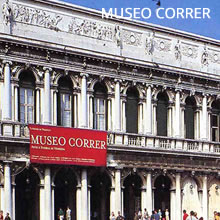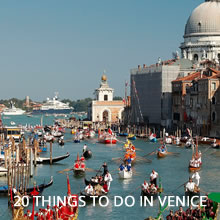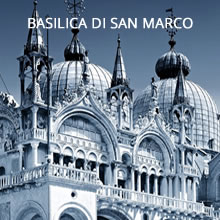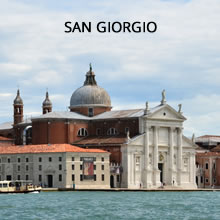
Tours in Venice

Hiring a water taxi is a wonderful and confortable way to experience the differences in terrain you get on this small island.
Murano
Murano is an island of the Venice Lagoon, located northeast of Venice, along the channel Marani. Like Venice itself, the reality is composed of seven smaller islands, of which two of artificial origin (Sacca and Sacca Serenella San Martin), divided by canals and rii and linked by bridges. It is totally urbanized (excluding S. Sacca Mattia still cleaning up) and I live about 5,500 people. The place is known throughout the world for the old craft of glass.
The art of glass
In 1295 it decreed that the glass of Venice, probably already active before the thousand, were transferred to Murano because the furnaces of the laboratories were often responsible for disastrous fires, which became particularly serious because, at the buildings were mostly wooden. However, documents and ancient artefacts testify that the industry had been rooted on the island for some time.
Concentrate in Murano glass served the Serenissima to better monitor the activity, jealous of an art that was made famous throughout the world from the beginning. The master glass makers were forced to live on the island and could not leave Venice without a special permit. Many, however, managed to flee abroad by exporting their famous techniques. The most important crisis that hit the industry was that of the fifteenth century when they began the manufacture of crystals of Bohemia, perhaps inspired by the same glass from Murano. Venice it came out, especially since the glass was used for the production of chandeliers, still among the best-known manufactures of Murano.
Only the master glass makers, among non-noble, could marry the daughters of noblemen. The Republic in fact, issued a decree, following the riots that occurred in the Greater Council of Murano, Murano citizens stated that only those who were born on the island or had purchased property in the same. In 1602, the mayor Barbarigo in the census of the islanders use to compile a Book of Gold. The procedure for obtaining the registration was neither simple nor short and it was only with the consent of the Republic. Who was not writing he could not play any type of work in glass, not participating councils and not received all the other privileges granted to citizens Murano.
Burano
Connected by a bridge to the island of Mazzorbo, Burano is a collection of islands of less than 3000 habitants; The heart of the town is Piazza Baldassare Galuppi on which stands the Church of San Martino. Its bell tower has a steep slope due to the partial collapse of his stands, and it’s founded, as some parts of Venice, on stilts. Inside fine workmanship the crucifixion by Tiepolo (1725).
In addition to the manufacture of lace the island is also known for its typical brightly coloured houses, although the reason and the origin of this custom is not yet clear. A hypothesis suggests that each color is simply the symbol of a certain family, because even in the modern era to Burano there are few but very common surnames. For this reason in Burano, as in other places of the Veneto region, nicknames are appended to the name to distinguish a family branch. Another guess, perhaps more founded, says that the bright colors would help boaters to regain their homes in the presence of the fog, which has particularly dense Burano. It should be noted that throughout the period of the Kingdom of Italy to change the color of a House would ask permission to a Superintendent.
Torcello
Torcello is an island situated in the northern lagoon of Venice placed immediately north of Burano. It lies at the heart of an area of sandbanks bounded on the south-west of the channel-channel Borgognoni Burano, south-east of the canal and north of St. Anthony from the channel of Torcello. To the north and east borders of the marshes and Rosa Centrega.
He was one of the oldest and most prosperous settlements in the lagoon, until the decline following the dominance of Venice and close to changing environmental conditions. Currently the island has only about twenty residents, but the priceless archaeological heritage which still makes it a very popular tourist place.
Already inhabited in Roman times, when it was probably a resort of the nobility altino (many artefacts in the area), became the V and VI century refuge populations of nearby Altino following the barbarian invasions.
It is believed that the name derives from Torricellium, name of the main tower guard Altino and maybe the neighborhood adjacent to it.
Entry into dell'Esarcato Byzantine Ravenna, following the latest and most serious invasion of the Lombards, Exiles of the city of Altino moved there also the episcopal see in 639, initiating the construction of the cathedral.
The island formed, together with Mazzorbo close, Burano, Ammiana and Costanziaco, the head of bridge of trade towards the Venetian Adriatic Sea, and was so prosperous that it has tens of thousands of citizens. In the century it was rebuilt the cathedral, flanked by the new church of Santa Fosca, and until the fourteenth century, Torcello was the main center of production of wool in the Duchy of Venice.
The city had its own nobility, and was governed by two councils, one major and one minor, affiancanti first ducal Gastaldo and then the mayor.
From the fifteenth century, however, the proximity to the city of Venice, resulting in unhealthy air all'impaludamento this area of the lagoon and the continuing plagues (the hardest of the fourteenth century and sixteenth century), provoked a progressive decline of the island. So much so that in 1429 the doge Francesco Foscari was forced to order the mayor of Torcello to end the ongoing pillaging of marble and stone where the inhabitants were engaged in Venice and Murano in his hometown.
Following dell'inarrestabile decline, the buildings were in ruins or were dismantled to provide bricks and building material for property development in Venice.
Despite the disappearance of the city the Diocese of Torcello, though moved to Murano, survived until 1818.
Take advantage now of our taxi service, and book your taxi transfer through our online booking.
- We pick you up at agreed time, never wait for a taxi.
- Price without surprises. Know in advance what it will cost you.
- Secure payment. No need to pay the driver, your reservation is already paid by credit card or PayPal at your convenience.
- Transportation guaranteed according to your needs (sports equipment, Extra luggage, adapted transport, groups, etc. ..)





